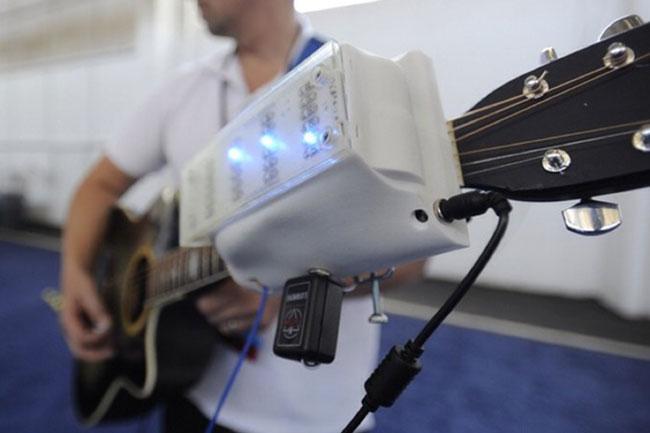
If you’ve ever tried to learn how to play an instrument, you probably know that feeling when someone’s breathing down your neck, barely letting you get a note out before they bombard you with more of their so-called “expertise.” Well, for those of you looking to pick up the guitar or simply improve your skills, the new robotic guitar hand dubbed “RoboTar” may be the way to master those chord fingerings without having to endure your friend’s unasked-for advice.
RoboTar essentially does half the handwork involved in playing guitar for you by holding the strings down on the necessary frets to play individual notes or create a chord. Either way, all the human player has to do is pluck or strum the right strings at the right time. This is, in practice, easier said than done – the RoboTar doesn’t automate the playing experience by any means. It brings the player halfway, effectively letting him or her focus solely on improving their strumming rhythm, endurance, and accuracy.
The system runs by connecting to an accompanying app via Android or PC (through Bluetooth). The user can program the app to play any chord imaginable, even those that are physically impossible for the human hand to achieve on its own. Once the user has loaded into the program all of the chords they’ll need, he or she arranges them in whatever order is desired. Then, once RoboTar is activated, all the user has to do is press down on a foot-pedal to trigger the device to move on to the next note or chord in the sequence. Take note, though: The RoboTar can only work on a guitar’s first four frets.
Kevin Krumwiede came up with the idea for the RoboTar — which is about midway through its Kickstarter campaign‘s funding period — when he was inspired to help his disabled father pick up the guitar again. Krumwiede’s father was only 49 when he had a stroke which took away his ability to finger chords. But because RoboTar so effectively takes care of holding chord and note fingerings, his father is playing again. Krumwiede’s device is interchangeably designed for both left- and right-handed strumming. The Kickstarter page explains that the RoboTar has many potential applications ranging from music therapy, to assisting fully functional players wishing to learn how to play and sing at the same time.
Krumwiede’s invention only has 15 days to gather a pretty steep $225,000. But even if RoboTar doesn’t come to fruition as a result of this particular crowdfunding effort, the fact that Krumwiede’s father is playing again with the help of a prototype indicates that we’re already at the cusp of a new, robotically assisted world.


